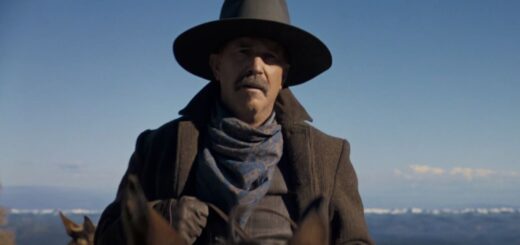Skip ‘Horizon’ and Watch This Classic Western Epic Instead
The second chapter of Kevin Costner’s self-directed, produced, and acted Western is set to release in 2025. However, for those looking for the excitement and action that a Western often brings, audiences may want to look elsewhere. Horizon: An American Saga Chapter 1 underperformed in its theatrical release, with audiences and critics alike taking issue with the narrative, pacing, and length of the first chapter of the tetralogy. While additional chapters of Costner’s project promise to unify these storylines, viewers looking for a similar Western epic that actually follows through on its promises (and in one sitting) should look to the past, specifically to 1962.
How the West Was Won has undoubtedly cemented its place in the Western hall of fame. The 1962 film featured a litany of Hollywood heavyweights from that era, including John Wayne, Debbie Reynolds, James Stewart, Eli Wallach, Henry Fonda, Karl Malden, Gregory Peck, Carroll Baker, Lee J. Cobb, Richard Widmark, Walter Brennan, Agnes Moorehead, and Russ Tamblyn. As such, it was a large-scale production for its time, and was also one of the first films to use cutting-edge Cinerama technology, which synchronized three 35mm projectors to create a super-widescreen picture. From its action sequences to its stunning setting in the American plains and deserts, the film brings the exploration of the American West to life in vibrant (and coherent) ways.The story follows the Prescott family as they make their journey across the Western United States in hopes of settling in the vast and uncharted lands there. The young daughters of Mr. Prescott, Eve and Lilith, anchor the audience to the narrative as viewers follow their very different journeys through the film. How the West Was Won touches on all the major players in the Old West over the course of sixty years, from railroad tycoons and hopeful gold miners to those looking for an escape from the Civil War.Horizon trips over the kind of storytelling that How the West Was Wonaccomplishes gracefully. Like the 1962 films, Horizon is broken down into distinct moments from the story of the American West. Unlike other Westerns, the film jumps from place to place in its story with very little context. While most audiences don’t enjoy having a narrative spoon-fed to them, a viewer shouldn’t struggle to decipher where and when they are in a story. What begins in 1859 quickly turns into 1863, which is not entirely laid out for audiences. The rest of Horizon: An American Saga – Chapter 1 takes place in 1863, but this is where the continuity ends.There are myriad characters in both How the West Was Won and Horizon. The audience is always aware of the who, what, why, and where of the characters and motivations of the former film, but it’s clear that Horizon isn’t quite sure how to connect all its pieces. Costner’s movie attempts to follow multiple journeys in the American West with new characters introduced throughout the film. Presumably, these new characters are to be expanded upon in later chapters. However, this epic falls flat when not a single character is given enough screen time for audiences to become emotionally involved with. Conversely, How the West Was Won gives just the right amount of time and attention to its many characters.


